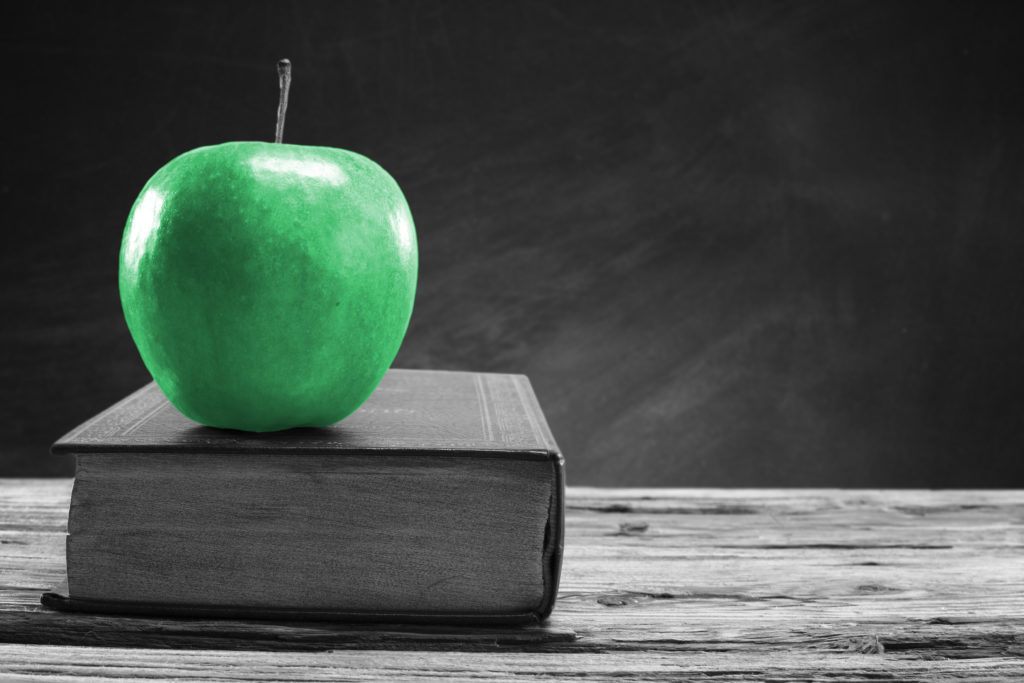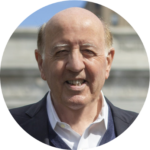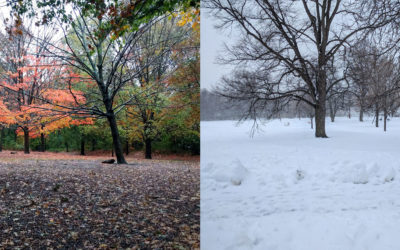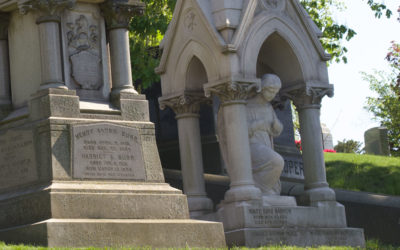Provocative Pairs
Learning with the Masters
Volume I: Major Influences Past and Present
By Robert DiYanni, New York University
Provocative Pairs
Learning with the Masters
Volume I: Major Influences Past and Present
By Robert DiYanni, New York University
Table of Contents
PART ONE: Established, Time-Honored Authorities
Introduction:
Extraordinary Figures, Sine Qua Non
Socrates and Leonardo da Vinci
Chapter One: Ancient Authorities
- Plato and Aristotle
- Sappho and Cleopatra
- Arete of Cyrene and Hypatia of Egypt
Chapter Two: Religious Figures I
- Confucius and Sakyamuni (Buddha)
- Muhammad and Averroes (Ibn Rushd)
Chapter Three: Religious Figures II
- Moses and Maimonides
- Jesus of Nazareth and Paul of Tarsus
Chapter Four: Christian Thinkers I
- Augustine of Hippo and Thomas Aquinas
- Hildegard of Bingen and Christine de Pizan
Chapter Five: Christian Thinkers II + 1 Muslim and 1 Atheist Thinker
- Martin Luther and Ignatius of Loyola
- Desiderius Erasmus and al Ghazālī
- Søren Kierkegaard and Friedrich Nietzsche
Chapter Six: Western Writers I
- Homer and Virgil
- Michelle de Montaigne and Francis Bacon
Chapter Seven: Western Writers II
- John Milton and Thomas Jefferson
- Jane Austen and William Wordsworth
- Charles Dickens and Leo Tolstoy
Chapter Eight: Influential Educators I
- John Amos Comenius and Horace Mann
- Johann Sebastian Bach and Zoltán Kodály
- Margaret Fuller and Jane Addams
Chapter Nine: Influential Educators II
- Neil Postman and Maxine Greene
- Leon Kass and Martha Nussbaum
Chapter Ten: Influential Thinkers I
- Baldassare Castiglione and Niccolò Machiavelli
- John Locke and Immanuel Kant
- Samuel Johnson and Jean-Jacques Rousseau
Chapter Eleven: Influential Thinkers II
- Adam Smith and John Stuart Mill
- Jean-Paul Sartre and Simone de Beauvoir
- D. T. Suzuki and Thomas Merton
Chapter Twelve: Movers and Shakers I
- Sor Juana Inés de la Cruz and François Fénelon
- Abraham Lincoln and Harriet Beecher Stowe
Chapter Thirteen: Movers and Shakers II
- Booker T. Washington and W. E. B. Du Bois
- Helen Keller and Anne Sullivan
- Rabindranath Tagore and Chinua Achebe
Chapter Fourteen: Educators Across Disciplines I
- Ruth Benedict and Margaret Mead (Anthropology)
- Jean Piaget and Erik Erikson (Psychology)
Chapter Fifteen: Educators Across Disciplines II
- Martin Buber and Parker Palmer (Religion +)
- Susanne K. Langer and Jerome S. Bruner (Philosophy/Psychology)
- Kwame Anthony Appiah and Jonathan Haidt (Philosophy/Social Psychology)
Chapter Sixteen: Extraordinary Characters I
- Marian Anderson and Jackie Robinson
- Martha Stewart and Oprah Winfrey
Chapter Seventeen Extraordinary Characters II
- Yogi Berra and Yoda, Jedi Master
- Sister Mary Clarence and Pete (Maverick) Wilson
[Whoopi Goldberg and Tom Cruise]
PART TWO: Visionary, Modernizing Authorities
Chapter One: Influential Scientists
- Galileo Galilei and Sir Isaac Newton
- Charles Darwin and Elbert Einstein
Chapter Two: Medical Practitioners and Researchers I
- Florence Nightingale and Clara Barton
- Elizabeth & Emily Blackwell and William Osler
Chapter Three: Medical Practitioners and Researchers II
- Lewis Thomas and Atul Gawande
- Frank Wilczek and Jennifer Doudna
Chapter Four: Social and Political Reformers I
- Mary Wollstonecraft and Emma Willard
- Benjamin Franklin and Frederick Douglass
Chapter Five: Social and Political Reformers II
- Mahatma Gandhi and Martin Luther King, Jr.
- Nelson Mandela and Desmond Tutu
Chapter Six: Educators and Educational Theorists I
- John Henry Newman and William James
- John Dewey and Maria Montessori
Chapter Seven: Educators and Educational Theorists II
- Lev Vygotsky and Ivan Illich
- Sylvia Ashton-Warner and Paolo Freire
Chapter Eight: Writers and Teachers I
- Virginia Woolf and James Joyce
- Ralph Ellison and James Baldwin
Chapter Nine: Writers and Teachers II
- Mary Beard and Garry Wills
- George Saunders and Mary Karr
- Marilynne Robinson and Robert Alter
Chapter Ten: Musicians and Teachers
- Nadia Boulanger and Andrés Segovia
- Shinichi Suzuki and Dorothy Delay
Chapter Eleven: Choreographer- and Musician-Teachers
- Agnes de Mille and George Balanchine
- Yo-Yo Ma and Wynton Marsalis
Chapter Twelve: Actors and Artists
- Konstantin Stanislavsky and Uta Hagen
- Dorothea Lange and Frida Kahlo
Chapter Thirteen: Architects and Museum Directors
- I. M. Pei and Maya Lin
- Philippe de Montebello and Laurence des Cars
Chapter Fourteen: Game Changers I
- James A. H. Murray and George Grove
- Vince Lombardi and Phil Jackson /li>
- Peter Drucker and Margaret Wheatley
Chapter Fifteen: Game Changers II
- Henri Petroski and Jeanne Gang
- Ken Burns and Neil deGrasse Tyson
- Bryan Stevenson and Saru Jayaraman
Chapter Sixteen: Contemporary Influences I
- James Beard and Julia Child
- Grace Hopper and Steve Jobs
Chapter Seventeen: Contemporary Influences II
- Stephen Sondheim and Andrew Lloyd Webber
- Martin Scorsese and Spike Lee
- Sal Kahn and George Lucas
Chapter Eighteen: Popular Contemporary Gurus I
- David Ogilvy and Jack Foster
- Roger von Oech and Edward de Bono
Chapter nineteen: Popular Contemporary Gurus II
- Richard Feynman and Edward Tufte
- Diane von Furstenberg and Tim Gunn
Epilogue: Family Mentors—Edward S. DiYanni and Mary H. DiYanni
Coda: Teaching Credo & Teaching Quotations
Appendix A: My Influential Teachers and Mentors
Appendix B: Teaching and Learning with Colleagues and Friends
Notes
References
Preface
Preface
Each of us can learn from the world’s great masters—past, present, and future. The most important thing we can take from them may be how to learn better ourselves and how to help others improve their learning. We can learn how to become masters of learning and masters of teaching.
We learn as we have been taught. We become what our teachers make of us—all those from whom we have learned, ourselves included. Who we learn from, how we learn from them, and what we learn count immeasurably. These things matter because, to a large extent, we become what we learn; our learning makes us who we are.
The best masters inspire as well as instruct; they encourage and motivate. We learn from their ideas and their ideals, from their principles and their practices. We learn, too, from their character, from their lives and actions. We learn from what they commit themselves to, from what they stand for, as they teach by living example.
For the masters included, I consider briefly why they taught (and teach)—what motivated them—along with how they taught (and teach). I consider, too, something of what we learn from them; I provide an exposition of key ideas and values, accompanied by brief excerpts from their sayings and writings.
Not all of these masters devoted their lives to conveying knowledge, though many did. Some were reformers; others developed philosophical and psychological approaches to teaching, created practical strategies for learning, or formulated designs with implications for instructional policy and practice. Still others used multiple technologies—television, film, websites, print and digital magazines, video games, and more to reach audiences of millions, as have Tim Gunn, George Lucas, Martha Stewart, Oprah Winfrey, John Madden, and Sal Khan, for example.
What makes a masterly teacher, a teaching master? What does it take to reach a level of art and craft such that teaching well seems as natural as breathing? Half a dozen considerations, I think, are relevant to mastering any art or craft, from cooking to broadcasting, from music and dance to medicine and engineering—across a multitude of disciplines, including rhetoric and literature, the visual and performing arts, mathematics and philosophy, history and religion, economics and psychology, science and technology, sports and film, management and magic, fashion and design, and beyond.
- Masters of every type continue to grow as individuals and as members of intellectual, social, teaching, and learning communities. They remain curious, inquiring into all manner of subjects and disciplines, not just their own specialties (though without neglecting those—keeping up their disciplinary “chops”).
- Masters sustain their passion for creating memorable experiences for others, especially for their students and followers. They amplify their constituents’ learning, adding immeasurable value.
- Masters demonstrate and model. They explain and explore. They engage their followers dialectically in dynamic interplay, teacher influencing student and student influencing teacher. And they do these things consummately well.
- Masters also excite and incite those they instruct. They arouse curiosity. They set minds aflame and hearts ablaze. Master release their followers’ imaginations. They summon them to the mysteries of learning and inspire them to strive for excellence.
- Masters stretch their students and followers, pitching ideas and lessons just beyond their reach, rousing their effort and will, so they are able to do things not considered possible. Masters enable others to do things they may not be able to do themselves.
- Finally, Masters awaken powers and ambitions in their followers, while inducing in them an incentive for pursuing their dreams. Masters help others discover what they truly love themselves.
In The Real Work: On the Mystery of Mastery, Adam Gopnik suggests that there is something magical about mastery, which involves accomplishment through accumulated practice, a summation of traditions of practice. Mastery of any art or craft, Gopnik suggests, grows out of generating flow from learned fragments, creating fluency from sequences of small steps. He suggests, as well, that mastery “involves everything we do” and “engages the totality of ourselves.” Mastery is more than having acquired fluency with a discrete set of skills; rather, it shows forth “a unique human presence” (8).
Like other masters of their craft and art, master educators “are not mere repositories of knowledge, but exemplars of a practice” that has become fully realized, embodied, and ensouled in the master teacher (9-10). Gopnik suggests, further, that mastery needs to be demonstrated in performance, fulfilled in practice. Mastery requires accepting the challenge courageously, what he calls “catching the bullet” (201-205). The final mystery of mastery is that the master takes the plunge, leaps into the unknown, accepts the risks, whatever they may be, and in the process, shows how it’s done.
In Zen in the Art of Archery, Eugen Herrigel explains how the master teacher remains always with the student, even as the student becomes proficient at what is being learned—archery, calligraphy, swordsmanship; art, history, music; engineering, mathematics, science; architecture, medicine, nursing; interpreting literature, analyzing visual objects, developing writing and thinking skill—and every other skill imaginable.
Herrigel explains that the physical teacher disappears, but the teacher’s spirit remains, as “teacher and pupil are no longer two persons, but one” (65). It’s a stage of learning where the pupil subsumes the teacher, incorporates the teacher.
The way to become a master teacher, to master the art of teaching, is to never cease to be responsive to its enticements, to remain always a student of its mysteries. These are the mastery goals towards which all educators of whatever type—and all masters, too, I believe, should aspire. In achieving these goals, each of us can be, in George Steiner’s words, an “accomplice to transcendent possibility” (Lessons of the Masters 102).
For each chapter segment of Provocative Pairs, I include two masters. I introduce the book with segments on Socrates and Leonardo da Vinci, Socrates as the West’s first great, influential thinker, and Leonardo as the most versatile, a supreme artist/scientist, gifted across many domains. Each chapter segment provides brief biographical notes about the figures, highlighting educational aspects of their lives. Each considers one or more key educational elements, including comments and quoted passages from each master’s works.
But why two figures per chapter? Why pair up the masters? Because doing so offers the opportunity for comparison and contrast—for examining relationships and discontinuities. Considering one master in light of another sharpens our understanding of both.
In Powers of Two, Joshua Shenk argues that two is the ideal number for all kinds of creative partnerships—from composing and performing songs, writing books and making movies and television shows, to inventing things (xvi-xxv). Some examples: Wilbur and Orville Wright, Vincent and Theo van Gogh, Jean-Paul Sartre and Simone de Beauvoir, Pablo Picasso and Henri Matisse, Susan B. Anthony and Elizabeth Cady Stanton, C. S. Lewis and J. R. R. Tolkien, Richard Rodgers and Oscar Hammerstein II, John Lennon and Paul McCartney. In science, James Watson and Francis Crick and their double helix (overlooking, sadly, the contributions of Rosalind Franklin). In technology, Bill Gates and Steve Jobs as competitors, Steve Jobs and Steve Wozniak as collaborators.
In politics, Ralph Abernethy and Martin Luther King, Jr., and a century earlier, Abraham Lincoln and Stephen Douglas. In psychology, Sigmund Freud and C. G. Jung. In sports, Chrissy Everett and Martina Navratilova, Larry Bird and Magic Johnson, Micky Mantle and Roger Maris, Roger Federer and Rafael Nadal (and recently Novak Djokovic and Carlos Alvarez). And from the world of comedy: Laurel and Hardy, Abbott and Costello, Lucille Ball and Desi Arnaz, Dean Martin and Jerry Lewis, Jackie Gleason and Art Carney, Mel Brooks and Carl Reiner, to cite a few more notable pairs.
Examples from literature include Ralph Waldo Emerson and Henry David Thoreau, Dorothy and William Wordsworth, Nathaniel Hawthorne and Herman Melville, Thomas Wolfe and his editor Maxwell Perkins, Ahab and Moby Dick, Hester Prynne and Arthur Dimmesdale (and Roger Chillingworth). And in more popular genres, Sherlock Holmes and Professor Moriarty, as well as Harry Potter and Lord Voldemort, Batman, Spider-Man and Wonder Woman.
Shenk contends, rightly I think, that some creative collaborations derive from and thrive on a kind of psychic convergence, a compatibility of personality and thinking style. In such cases the cognitive frameworks of the creative pairs match. Other creative pairs work more by opposition and contestation, via competition rather than compatibility and cooperation. These adversarial pairs rival one another in creativity, motivating progress and perseverance, even inspiration, resulting in a productive competitive rivalry. The creative competitions push the creative rivals in their individually successful directions; the collaborative relationships exhibit cognitive interdependence, which fuels their joint artistic successes. Some creative pairs exhibit both tendencies—collaborative convergence and creative dissonance—John Lennon and Paul McCartney providing a famous example.
Every chapter segment of Provocative Pairs concludes with considerations about learning inspired by the paired masters. Most summarize key influential practices of the chapters’ subjects—Sappho and Cleopatra, Florence Nightingale and Clara Barton, Grace Hopper and Steve Jobs, I. M. Pei and Maya Lin, James Beard and Julia Child, Vince Lombardi and Phil Jackson, Martin Scorsese and Spike Lee, Conrad Hilton and Danny Meyer, to cite a few. Other influential practices and ideas emerge in imaginary dialogues between, for example, Plato and Aristotle, Søren Kierkegaard and Friedrich Nietzsche, Virginia Woolf and James Joyce, Ralph Ellison and James Baldwin, Sylvia Ashton-Warner and Paolo Freire, Stephen Sondheim and Andrew Lloyd Webber, Sal Khan and George Lucas, Alan Alda and Peter Schickele, Willie Ruff and William Zinsser, among many others.
The considerations for learning I offer reflect my educational ideas refracted through the lenses of the world’s masters Throughout, ancient wisdom and modern ideas about learning coalesce in contemporary practice.
I have kept the chapter sections short; each provides a brief overview of paired masters’ lives and work along with a taste of their practice. Collectively, the chapters present a smorgasbord of appetizing morsels to sample and savor. Taken together as well—and to shift the metaphor—the chapters invite you on an educational journey through the centuries and across disciplines and cultures. They offer provocations to thought through distillations of multiple kinds of mastery.

Current Writing Projects
My current writing projects are linked below: (1) a book on reading literature (Improvisations); (2) two books on getting smarter (fast and across the board); (3) a pair of memoirs about my teaching life (50 years+) and my life with music (even more years!). Also included is information about my biggest work-in-progress: an encyclopedic summa pedagogica, with the current title: Provocative Pairs—Learning with the World’s Masters (152 chapters—and counting—each chapter a dozen double-spaced pages, with most chapters devoted to a pair of great masters past and present).
For each of these works in the making, I have provided a table of contents and preface. A couple of them also include a sample chapter. An additional book I have in the works is Poems to Live By, for which I’ve included about a third of what I’ve written so far—also with a brief TOC and prefatory note.
Mastery—Learning with the World’s Best Masters
SMARTER—How Getting Smarter Can Enrich Your Life
Think for Your Life
How Critical and Creative Thinking Can Improve Your Life
Teach for Your Life
Stories of Teaching & Learning
Double Life: The Teaching Life & Living with Music
Poems to Live By
Essays: Reflections and Ruminations

Robert DiYanni
Author ⪢ | Professor ⪢ | Consultant ⪢
Robert DiYanni is a professor of humanities at New York University, having served as an instructional consultant at the NYU Center for the Advancement of Teaching and Center for Faculty Advancement. For these centers he conducted workshops and seminars on all aspects of pedagogy, consulted with faculty about teaching concerns, visited and observed classes, and provided a wide range of pedagogical consultative services. Professor DiYanni serves on the faculties of the School of Professional Studies and the Stern School of Business at NYU. He earned his undergraduate degree in English from Rutgers University, attended a Master of Arts in Teaching program at Johns Hopkins University, and received a Ph.D. in English Language and Literature from the City University of New York Graduate Center.
In addition to his work at NYU, Dr. DiYanni has taught at City University of New York, at Pace University, and as a Visiting Professor at Tsing Hua University in Taiwan and at Harvard University. As a high school teacher for four years and a college professor for more than four decades, Professor DiYanni has taught students from eighth grade through doctoral candidates. Most of his teaching, however, has been with college and university undergraduates. His numerous workshops, offered in more than twenty countries, have been attended by secondary school teachers and administrators, as well as by undergraduate college and university faculty and administrators.
Dr. DiYanni has written and edited numerous textbooks, among them, Literature: An Introduction; The Scribner Handbook for Writers (with Pat C. Hoy II); Arts and Culture: An Introduction to the Humanities, (with Janetta Rebold Benton), the basis for a series of lectures given at the Metropolitan Museum of Art; and Modern American Poets: Their Voices and Visions, which served as a companion text for the PBS television series Voices and Vision, which aired in the late 1980s.
You may also want to read these…
Comparing Poems
Comparison is one of the best ways of teaching anything; it is especially useful for reading and teaching…
The Widow of Ephesus
Once there was a certain married woman in the city of Ephesus, whose faithfulness to her husband…
Villanelle Variations
“I learn by going where I have to go,” writes Theodore Roethke in “The Waking.” “The art of losing…


